Meet the European Commission’s top civil servant on transport matters, Henrik Hololei – a man very much in demand. Quite aside being the Director General of the department dealing with Transport & Mobility – DG MOVE, he is also the Chairman of the Administrative Board of SESAR. POLITICO recently named him one of the most influential Estonians in the EU sphere. Airport Business was lucky to get a slot with him and what followed was very illuminating. Interview by Elliot Bailey.
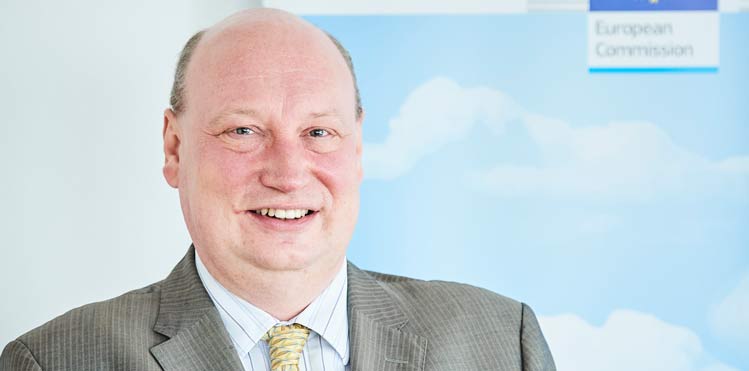
Hololei’s CV of accomplishments to date belies his relative youth. As one example, he was appointed Minister for Economic Affairs in Estonia when he was just 31 years old. Some 15 years later, he has twice been Chief of Cabinet to an EU Commissioner and served as the Deputy Director-General at the Secretary General of the European Commission. He became Director-General at DG MOVE in October 2015.
It’s rare that you get an interview slot that begins the day, but upon meeting Henrik Hololei on a bright, crisp autumnal morning, it quickly becomes clear that he is an early bird. He is good humoured, ebullient company, yet focused and never trivial about the topics under discussion. He clearly enjoys the diversity of the transport portfolio, as evidenced by the vast array of mementos from all the various forms of mobility covered by DG MOVE. Among the models of boats, cars and trains, at a brief count, I note around 25 model aircraft spread around his office. I stopped short of suggesting he needed an airport (makers of model airports, take note).
We begin with the EU aviation strategy, launched by Transport Commissioner Violeta Bulc two years ago and the essential pillar for DG MOVE’s work on aviation. Hololei explains “The Aviation Strategy is very significant. It is our license to work – it’s different from previous documents. It takes a holistic view – not just airlines. The strategy treats all the key actors of the aviation value chain in a similar manner: airlines, airports, air navigation service providers, aircraft manufacturers, lessors – they all play an important role and we want to facilitate their cooperation and participation.”
He adds “Aviation is a significant enabler of economic growth – it creates high value jobs and it also incentivises investments into research & innovation, because it is a very high-tech business. So in this way, the aviation strategy is an integral element in the wider work of what this European Commission wants to achieve within the EU and beyond.”
Are you happy with its progress? “I think we have been quite well balanced in that it is both ambitious, but deliverable. Ambition without realism doesn’t make much sense. Yes, I’d like to do more, but what is frustrating is aspects that the European Commission cannot really influence. The fact that the SES2 package (ATM reform) and the revisions of EU regulations on passenger rights and airport slots are not progressing because of “an unresolved issue related to an airport in the Spanish coast” is quite scandalous. This is stalling the advancement and modernisation of so much aviation legislation. And even more so that we have not been able to sign aviation agreements that are ready and would open up market access with countries that are politically important to us, such as Ukraine.” For readers from outside the EU, this is a reference to an ongoing diplomatic disagreement between Spain and the UK regarding Gibraltar.
Hololei has many years’ experience dealing with the EU institutions (from the outside and within) as his pragmatic view makes all too clear: “Processes take time. This Commission has been focusing on making sure that proposals that are put on the table have undergone a strong impact assessment. They have to be tested by an ad hoc regulatory scrutiny board and they are subject to longer public consultations than in the past. This means that the proposals are ultimately more mature than perhaps in the past, but also better consulted. This is about delivering on the Better Regulation agenda – another priority of this Commission.”
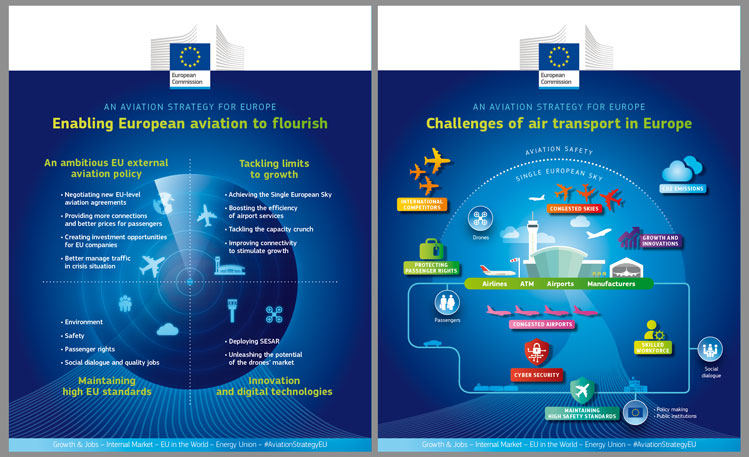
Henrik Hololei, Director General, DG MOVE: “The Aviation Strategy is very significant. It is our license to work – it’s different from previous documents. It takes a holistic view – not just airlines. The strategy treats all the key actors of the aviation value chain in a similar manner: airlines, airports, air navigation service providers, aircraft manufacturers, lessors – they all play an important role and we want to facilitate their cooperation and participation.”
On airline consolidation
In a year of extraordinary traffic growth, the failure of 3 well known airlines during the peak summer months (Air Berlin, Alitalia and Monarch) is still playing out in the newspapers. Hololei is informed and talks about how the airlines in question had each had issues in the recent past and that “the question was rather not ‘if’ but ‘when’. These bankruptcies support the inevitable trend towards the further consolidation of the market, as there are still too many airlines in Europe. But we also have the 3 big airline groups posting quite promising results throughout this year. Then the Low Cost Carriers keep going very strong and then some of the smaller carriers that have identified a good niche and making it work for them – Icelandair is an example here.”
The European Commission is not against consolidation, but it does have understandable concerns. “The key thing for us at the European Commission is to maintain connectivity and competition. That’s why we are keeping a close eye on what is going on. We also trust the LCCs to provide the necessary competition and also connectivity. But there are increasingly routes which are becoming monopolistic – and that does not serve the interests of the passengers and businesses and it is clear that consolidation is playing a part in that.”
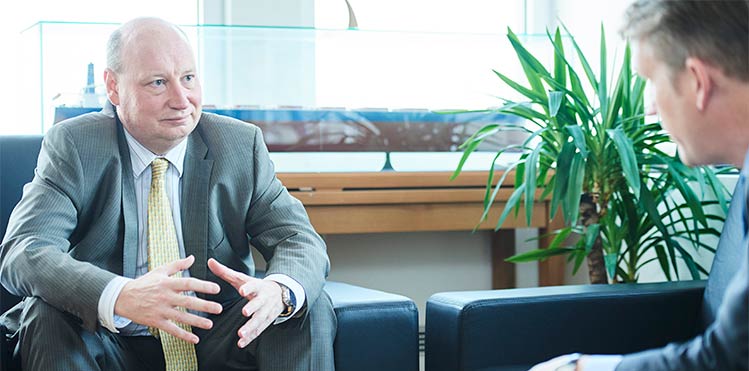
Henrik Hololei, Director General, DG MOVE: “To me it’s clear that the airports and airlines are two sides to the same coin. It is very important that they continue to fully utilise the communications channels they have available to them. The best thing is when the airlines and airports are able to find common accord. It’s less good, if regulatory intervention is needed, but if that’s what it takes then we don’t shy away from getting involved and arming ourselves with the facts.”
He is mindful of what consolidation has done to the US airline industry “In the US, you have the 3 big groups doing extremely well, having the highest profits in the history of aviation, but at the same time you have many routes that have become entirely monopolistic and of course this is not sustainable if you want to have a competitive market. The attitude of the 3 biggest airlines in the US has become extremely protectionist. The US is no longer a champion of liberalisation in aviation – definitely not – they are one of the most closed. The way those 3 big airline groups are attacking any third country airline that wants to enter their market is totally opposite to what one would expect from those who have done so well from liberalisation – posting record profits and so on.”
At the height of the EU-US Open Skies spat regarding the US Department of Transport’s persistent hesitation to greenlight the Irish subsidiary of Fly Norwegian last year (thereby holding back proposed new transatlantic flights from Cork to Providence), Hololei famously addressed the Washington Aviation Club issuing a blunt warning that the US’ protectionism risked turning the EU-US Open Skies agreement into “a Swiss cheese”.
He tells me “The cases we had with Norwegian Ireland and Norwegian UK are good examples of this protectionist attitude and I’m very glad that the US administration has followed the rule of law and the principles of the EU-US agreement and these licenses have finally been granted.”

At the height of the EU-US Open Skies spat regarding the US Department of Transport’s persistent hesitation to greenlight the Irish subsidiary of Fly Norwegian last year (thereby holding back proposed new transatlantic flights from Cork to Providence), Hololei famously addressed the Washington Aviation Club issuing a blunt warning that the US’ protectionism risked turning the EU-US Open Skies agreement into “a Swiss cheese”.
Regarding the evaluation of the Airport Charges Directive
As announced two years ago, the EU Directive of Airport Charges is currently being evaluated, against a backdrop of a particularly vicious campaign by some airlines. Hololei provided some clarity on the stage this process is at: “We have received the final report from the independent consultant (Steer-Davis-Gleaves). It’s still being analysed by my services here, in line with emerging findings that have been discussed at the Florence Airport Charges Symposium during the summer. It’s an emotionally charged piece of legislation – with economic issues, so we have to get it right. We have to maintain a continuous dialogue with both the airports and the airlines. We need to base ourselves on fact and we have to factor in the work of the Thessaloniki Forum of national regulators. In the first half of next year, we hope to be able to put something on the table that is balanced and yet, where nobody will be particularly happy with the result. If any side is happy, then we haven’t done the right job.”
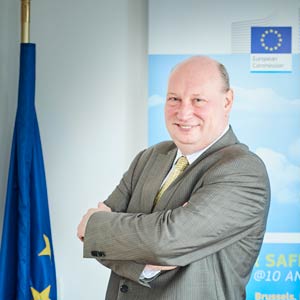
Since his time as Head of Cabinet for the previous EU Transport Commissioner, Siim Kallas, Hololei has recognised that airports in Europe have become businesses in their own right and that the regulatory framework needs to encourage their business transformation – not hold it back.
Since his time as Head of Cabinet for the previous Vice-President of the Commission in charge of EU Transport, Siim Kallas, Hololei has recognised that airports in Europe have become businesses in their own right and that the regulatory framework needs to encourage their business transformation – not hold it back. When asked about airports as a business, Hololei mentions the study on airport competition published by Oxera (commissioned by ACI EUROPE), “The study is useful. When you consider the evidence, its findings about intensifying competition between airports don’t come as a big surprise to me.”
However, he makes clear that he has no time for the ongoing ‘ping-pong’ regarding airport charges between airlines and airports, most recently in a series of vicious tweets issued by one of the airline associations. He tells me “To me it’s clear that the airports and airlines are two sides to the same coin. It is very important that they continue to fully utilise the communications channels they have available to them. The best thing is when the airlines and airports are able to find common accord. It’s less good, if regulatory intervention is needed, but if that’s what it takes then we don’t shy away from getting involved and arming ourselves with the facts.”
The need for more infrastructure
“Both sides need to bear in mind that we do not have enough infrastructure. We have all seen the Challenges of Growth studies from Eurocontrol and what is predicted. Airports have to be able to invest – it’s inevitable. Try to build an airport today, try to build even a new runway today and you run into problems. The airlines have to understand that these investments are in their interest too – so that in 10 or 15 years, they still have somewhere to land and somewhere to take off. For that reason, the interaction between the airports and airlines has to increase – airports need to listen to airlines when they make their decisions about investments. Increased transparency can help alleviate some of the concerns of these airlines that are casting such a shadow on the airport-airline relationship.”
External relations
One of the most talked-up aspects of the EU aviation strategy is the conversations it has initiated over liberalising traffic rights beyond Europe, with a wide variety of countries. In the era when local/national politics appear to be making a noticeable comeback, Hololei strikes a distinctly globalised tone:
“External relations is a cornerstone of the Aviation Strategy. We have to be proactive in this area. Look around you. The world is changing. The fastest growth in Asia and Europe has to be a part of that growth – we need to incentivise and facilitate our aviation industry. The best way to do that is through comprehensive aviation agreements – not just about traffic rights – that we negotiate at EU level and that come to replace old and often restrictive bilateral agreements. It’s about liberalising market access, but also about regulatory convergence, investment opportunities and promotion of the European way of doing business. This is significant for airports.”
And that is certainly happening. Negotiations led by the Commission are already underway with Turkey (3 rounds done), Qatar (3 rounds done), ASEAN (4 rounds done). They have been concluded with Tunisia and Azerbaijan and the Commission hopes to begin negotiations with the UAE in the near future. “We have the capacity to run multiple negotiations at the same time, but the outcome we want to achieve is always a win-win outcome. The test is always quality of result, not necessarily the time taken.”
Hololei links this agenda not just to the route development opportunities these agreements offer to airports and the related connectivity gains for their communities – but also to the global ambitions of the major airport groups and their investments beyond Europe.
“I am very proud of the European airports that are able to invest in third countries and provide and export European know-how and quality of service. The comprehensive agreements that we seek to put in place in our external relations efforts are about supporting that. Long gone are the days when the airport is only something associated with only one location. Today’s airport groups are as global as our airline groups – they operate in all the continents of the world.”
The B word
External relations inevitably leads to the mention of Brexit. Hololei’s trademark enthusiasm appears to fade for a moment, when I raise the topic. “Brexit is an extremely unwanted outcome. It all makes me very sad. The UK has been an integral player in building the internal aviation market, pushing us to be proactive towards third countries and new markets. It has been very vocal and instrumental in modernising the aviation framework – it has contributed a lot, but has also benefited enormously. With regard to how Brexit will affect aviation, I don’t think there’s much to say. We all know the nature of these negotiations – it’s been said from the beginning that there will be no sectoral negotiations before the conditions for UK exit have been agreed. The current negotiations haven’t progressed sufficiently.”
And have you considered what will happen in the event of no-deal/hard Brexit scenario? “Aviation has been something that has bound us together and opened up so many possibilities. The disruptions would be very unfortunate, but unavoidable if a sensible agreement is not made. The team here has looked into all kinds of scenarios and we have a pretty good understanding of what could happen. At this stage, we need to be ready for all eventualities. But the ball is not in the EU’s court. It is the UK – they have to get their act together and define what they want in terms of aviation relationship.”
On security
“We have a very robust regulatory framework in place – Regulation 300 is the basis of our work and our inspections – most importantly, it has not been breached. We need to keep it that way and we need to be ready to the new threats – cyberattacks. This is the terrorism of the future, if not to say already the present day.”
Turning to the thorny matter of landside security, Hololei replies with conviction “There are never easy solutions to landside security, but the work goes on with authorities responsible for home affairs. It has become an internal security services issue. Airports themselves are evolving in this regard. One example I want to mention here is Brussels Airport. After the devastating and cowardly attacks in March 2016, the airport has really become the example of best practice – the way they have addressed these threats, with much more surveillance of the perimeter, but at the same time constantly thinking about throughput and passenger convenience. Some of the solutions they have developed can be implemented at other airports, so in this regard, they have really taken the lead.”
“With ACI EUROPE, we have worked very well together to see what is needed from us from the regulatory perspective. Cooperation with ACI EUROPE on security matters has been extremely good. We have been working together to deal with challenges in this field, striking a balance between the needs of the passenger and the needs of air transport interests. A good example is the way we all worked together to defend the sector against the US’ disproportionate ban on PEDs and we managed to find a good outcome – this would not have been possible if ACI EUROPE had provided not only the questions, but also the solutions.”
On SESAR
The SESAR Joint Undertaking is a subject for which Hololei reserves a special enthusiasm, in part because of his role as Chairman of the Administrative Board. He speaks about the excellent level of engagement by industry. He is clearly proud of his involvement with it and of the innovative solutions that have been developed and deployed so far under SESAR. “I very much believe in SESAR. I am very proud of what they have been able to do. It is a testament to how the public and private sector can work together – and I see the solutions it has driven as part of the opportunity to export our know-how. These are European solutions, with European patents, that can be sold and deployed worldwide. We are the Number 1 in the world in terms of the modernisation of ATM and we have to maintain that position and continue to invest in SESAR – both in research and in deployment.”

The SESAR Joint Undertaking is a subject for which Hololei reserves a special enthusiasm, in part because of his role as Chairman of the Administrative Board. He is clearly proud of his involvement with it and of the innovative solutions that have been developed and deployed so far under SESAR.
Decarbonisation
Decarbonisation has a firm place in the Aviation Strategy and DG MOVE is a long time supporter of Airport Carbon Accreditation, with a representative on the programme’s independent advisory board. “The industry has been extremely engaged. Airports have been one of the first ones to take decarbonisation very seriously. Airport Carbon Accreditation is an excellent initiative and it has done well with so many airports wanting to get involved. I think it’s also important to be ready for the future – more use of sustainable, advanced biofuels for example, will penetrate the air transport sector soon. Airports need to look into, in order to be ready to provide that soon, to help the airlines reduce the primary source of their emissions. Let’s not forget, this is also the basis of aviation’s license to grow.”
On EASA
In 2015 the Commission made a set of proposals to update the EU’s aviation safety framework (i.e. the “EASA Regulation”) with changes considered necessary to future-proof Europe’s aviation system and to tackle questions like drones and cybersecurity. I ask how this is advancing and whether there will be a breakthrough any time soon. Hololei replies “I’m optimistic. I have seen a very big change in the ways of working between the Council and the European Parliament in the past half year. The current Estonian Presidency of the EU are tackling the EASA Basic Regulation with enthusiasm and so has the Parliament rapporteur and both are keen to conclude this file before the end of the year.
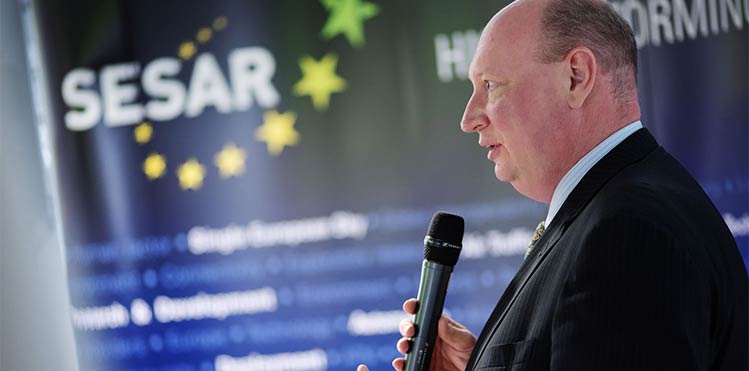
Henrik Hololei, Director General, DG MOVE: “I very much believe in SESAR. I am very proud of what they have been able to do. It is a testament to how the public and private sector can work together – and I see the solutions it has driven as part of the opportunity to export our know-how.”
“Some might say that it could be done quicker, but it is a very complex file and we want to have a good outcome, one that gives long-term stability to EASA and opens up the possibilities for drones. It’s much less important if it happens six months earlier or six months later. It’s less than two years that this file has been under discussion, bear in mind, the 4th railway package took more than five years, so we’re still ahead in terms of time.”
Our time is up. I manage to sneak in one last question – returning to the matter of the Gibraltar problem and how it is holding so much aviation regulation hostage at the moment. What’s going to happen?
“Eventually, all bottlenecks get somehow resolved and I don’t think that this one will be any different. I think it’s just very unfortunate that it is taking so long to get there and we’re still not there. But I have to maintain the optimism. I think I am an optimist by nature,” he says with a beaming smile.







